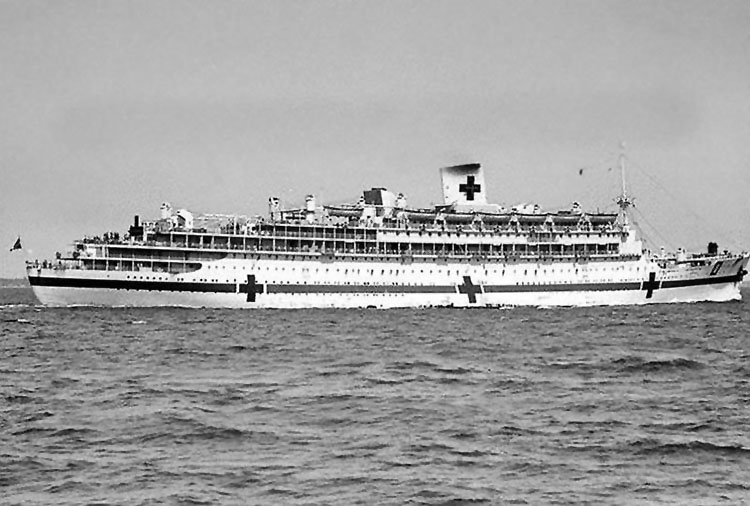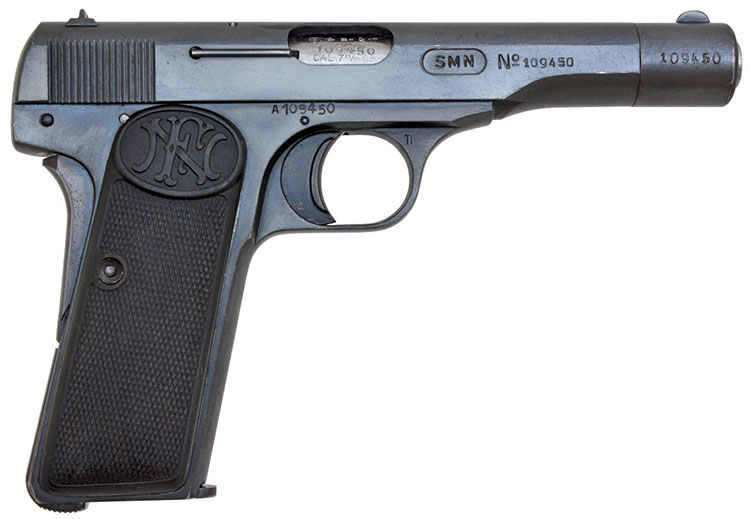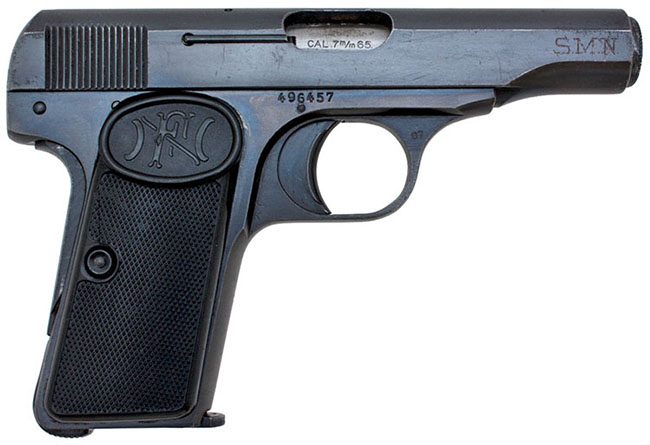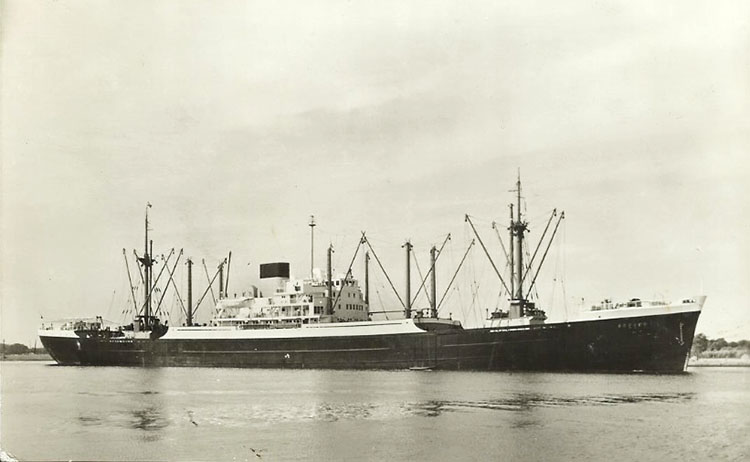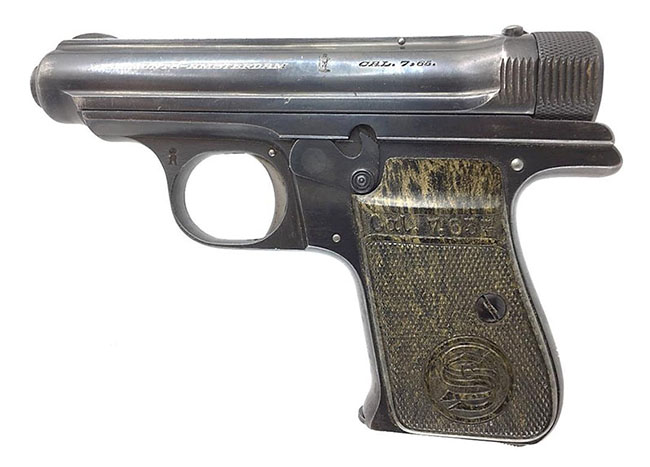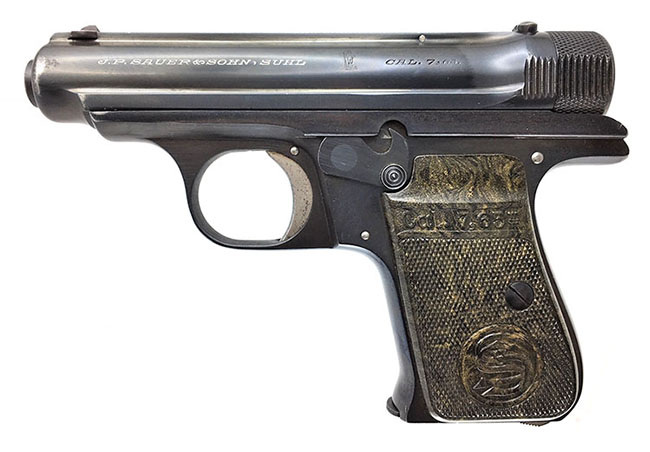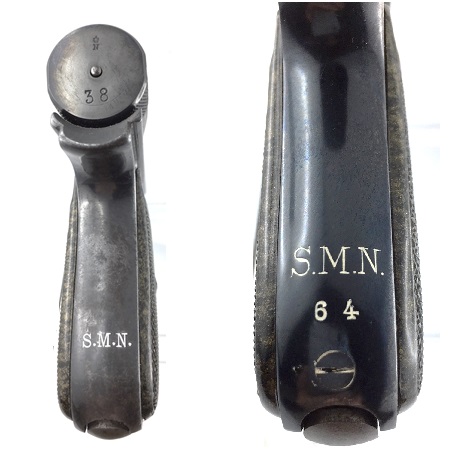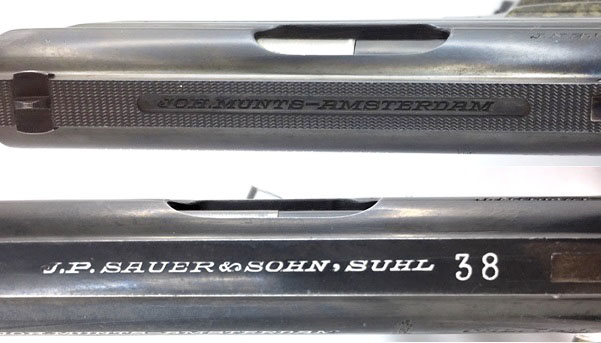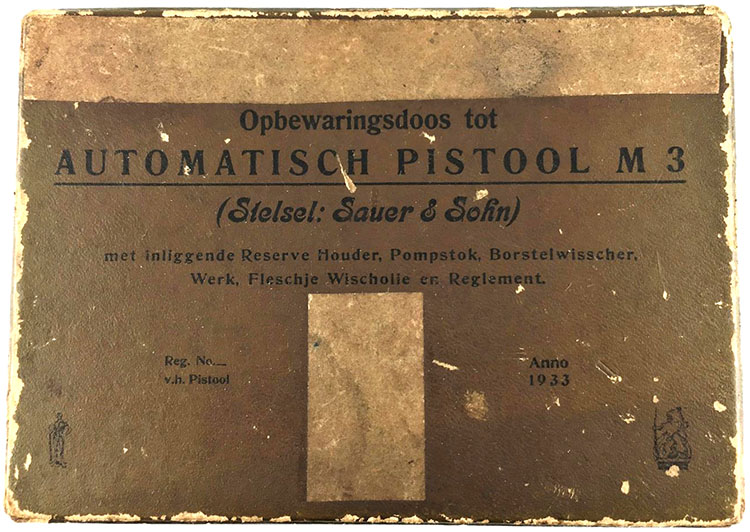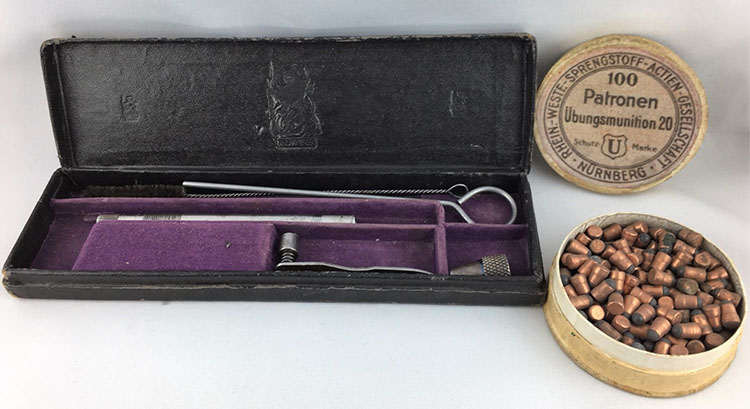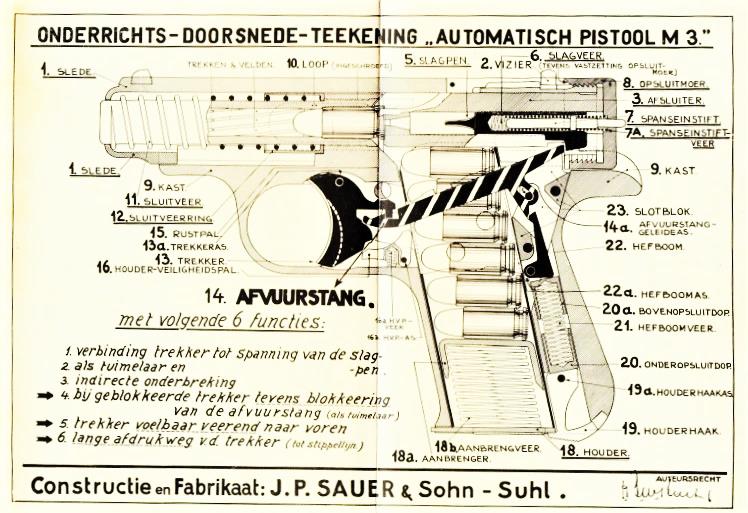 |
|||||||||||||||||||||||||||||||||||||||||||||||||||||||||||||||||||||||||||||||||||||||||||||||||||||||||||||||||||||||||||||||||||||||||||||||||||||||||||||||||||||||||||||||||||||||||||||||||||||||||||||||||||||||||||||||||||||||||||||||||||||||||||||||||||||||||||||||||||||||||||||||||||||||||||||||||||||||||||||||||||||||
|
Sailing the Seven Seas - by Dr. Stefan Klein, Marck Slootweg, and Vincent Cozijn Preliminary remarks by Dr. Stefan Klein Sometimes it is a coincidence that the fog of history over a collector's weapon clears and one can almost completely trace the pistol’s history. This is what happened with two Sauer & Sohn (S&S) semiautomatic pistols, Model 1929, in caliber 7,65mm Browning, which I purchased from a Dutch collector in 2018. The two weapons with the inventory numbers 38 and 64 belonged to the Dutch shipping company Stoomvaart Maatschappij Nederland (SMN) and are marked with S.M.N. at the rear of the frame. SMN S&S pistols are relatively rare pieces, which I was aware of at the time of my purchase, having read Cate and Krause’s description of the Dutch S&S Model 1929 in their book J.P. SAUER & SOHN, Volume II. However, in a US discussion board, I had introduced my new buys in early 2018, seeking more information, but the response was poor. After about one and a half years, my forum post having been long forgotten, a Dutch collector, Marck Slootweg, asked me if I was interested in further information. Of course I was - what a question! Slootweg is well-known for his work on Dutch police armament (see the book Politiebewapening: De Bewapening van de Nederlandse politie 1945-2005 by V.M. Cozijn and M.J. Slootweg). His offer led to a fruitful exchange about S&S pistols and the armament of Stoomvaart Maatschappij Nederland. This article is the result of a fortunate collaboration with my fellow Dutch collectors.
During the Great War, connections between the East Indies and the West Coast of North America via Hong Kong and Manila were established. After the war, SMN opened several new services to South America and a weekly Holland-Java connection. The outbreak of World War II in September 1939 plunged the shipping world into chaos and it became dangerous to operate in the North Sea. At that time, the SMN fleet was comprised of a total of 33 ships (six passenger, four passenger/cargo and 23 cargo ships). Four more freighters were on order. Additionally, SMN managed 15 ships for third parties. On 10 May 1940, Germany invaded the Netherlands, and the Dutch chose for the allied cause. Many of the SMN ships saw service under the British Ministry of War Transport, and after the attack on Pearl Harbour in December 1941 all Dutch merchant ships were taken under government service. For example, the luxury liner MS ORANJE II, in service since 1939, was converted to a hospital ship. SMN had considerable losses during World War II: three passenger liners, thirteen freighters, and eight managed ships under the care of SMN. Hundreds of crew members died.
In 1948, SMN started serving connections to South America, South Africa, the Persian Gulf, and India. In 1960, however, the Indonesian government declared that passenger services and trade under the Dutch flag would be discontinued, which abruptly broke a 90 year tradition. Thus SMN turned its remaining passenger ships into a round-the-world cruise service fleet. Remaining connections served China, Japan, New Guinea, Tahiti, New Caledonia, and New Zealand. Containerization and financial issues forced SMN to merge with three other Dutch shipping companies, which ultimately resulted in a joint venture, Nederlandse Scheepvaart Unie, on 20 January 1970, when SMN ceased to exist as a separate entity.
Between 1920 and 1959, SMN acquired approximately 300 handguns in different calibers from various manufacturers (including Mauser, Arminius, CZ, Unique, FN, Remington, Webley, and Colt). Among these were also 71 S&S pistols Model 1929 and a Behördenmodell, which were purchased by the Dutch arms trade company called Joh. Munts between 1933 and 1939 in four batches. These pistols were marked with consecutive inventory numbers 1 to 72. The S&S pistol No. 38 is from a lot of 48 pistols with serial numbers 190871 to 190918, which was purchased in 1933. In 1936 and 1937, eleven Model 1929 and one Behördenmodell followed. In 1939, SMN bought its last 12 S&S pistols in the serial number range 225237 to 225248, including the pistol with inventory No. 64. These 12 Model 1929 pistols were assembled by S&S from previously manufactured parts, since the production of the Model 1930 and variants had already been discontinued by 1936. In 1947, SMN purchased 20 FN pistols (most likely Model 1910 or 1922) from Joh. Munts, which received inventory numbers 73 to 92. In 1951, a batch of 50 secondhand FN Model 1922 followed. The serial numbers of these pistols are known, and these pistols have an SMN ownership engraved but no inventory numbers (Figure 5, 6).
In any case, it is very unlikely that all handguns in stock by SMN were used on ships, because warehouse guards and personnel of different port facilities were also armed. The almost new condition of pistol No. 64 indicates that this weapon has not seen significant use. In 1965, SMN sold 161 handguns (130 pistols, 31 revolvers) to the Joh. Munts company. An important factor might have been a change in Dutch firearms legislation which made it more difficult for private companies to own firearms. It is, however, unclear whether SMN sold all its weapons to Joh. Munts. Anyway, among the 161 handguns were also 47 pistols of the S&S company. In 1966, Joh. Munts sold No. 64 to a private person before it came back to Joh. Munts in 1989, and then was shipped to their store in The Hague. Since 1990 the pistol circulated in Dutch collector’s circles, before it returned to Germany in 2018.
Description of the Two S&S Pistols S&S pistols No. 38 and No. 64 have green-brown-marbled grips and a cocking indicator in the center of the slide cap (Figures 8 and 9). Figure 9 shows an additional screw (No. 64) which one can find with many Dutch S&S pistols. The Dutch had some quality issues with the magazine catch. Thus they ordered an additional spring to help tension the catch; that additional spring is held in place by the screw. While No. 38 has a Dutch acceptance (crown/R) on the left side of the trigger guard, No. 64 has no such acceptance mark. No. 64 has an adjustable front sight, while No. 38 has a fixed one. No. 38 has the reference to importer Joh. Munts on the left side of the slide, while No. 64 has it on the top (Figure 10).
No. 64 came with a 4mm training barrel from RWS which has the Munts-Logo in the lid (Figure 11). However, this item did not originally belong to the SMN pistol and was added by a previous owner. We have found no reference to 4mm barrels for the SMN. Training barrels were sold by Munts to the Amsterdam police force and private persons.
Conclusion: After nearly 80 years the two S&S pistols No. 38 and No. 64 have found their way back to Germany. In this time they served SMN for 30 years. What exact route they took, whether they were assigned to a specific ship, and how they survived the turbulent phase during World War II, is still unclear. At the moment, many documents of the SMN have not yet been digitized and are not publicly accessible. There is a vague hope that in the future it will be possible to prove where each of these pistols were used. Despite all this, with the help of these two S&S pistols we have been able to gain an exciting insight into the history of SMN. |
|||||||||||||||||||||||||||||||||||||||||||||||||||||||||||||||||||||||||||||||||||||||||||||||||||||||||||||||||||||||||||||||||||||||||||||||||||||||||||||||||||||||||||||||||||||||||||||||||||||||||||||||||||||||||||||||||||||||||||||||||||||||||||||||||||||||||||||||||||||||||||||||||||||||||||||||||||||||||||||||||||||||
|
Copyright 2019 by Dr. Stefan Klein, Marck Slootweg and Vincent Cozijn. All rights reserved. |
|||||||||||||||||||||||||||||||||||||||||||||||||||||||||||||||||||||||||||||||||||||||||||||||||||||||||||||||||||||||||||||||||||||||||||||||||||||||||||||||||||||||||||||||||||||||||||||||||||||||||||||||||||||||||||||||||||||||||||||||||||||||||||||||||||||||||||||||||||||||||||||||||||||||||||||||||||||||||||||||||||||||
|
|
|||||||||||||||||||||||||||||||||||||||||||||||||||||||||||||||||||||||||||||||||||||||||||||||||||||||||||||||||||||||||||||||||||||||||||||||||||||||||||||||||||||||||||||||||||||||||||||||||||||||||||||||||||||||||||||||||||||||||||||||||||||||||||||||||||||||||||||||||||||||||||||||||||||||||||||||||||||||||||||||||||||||

